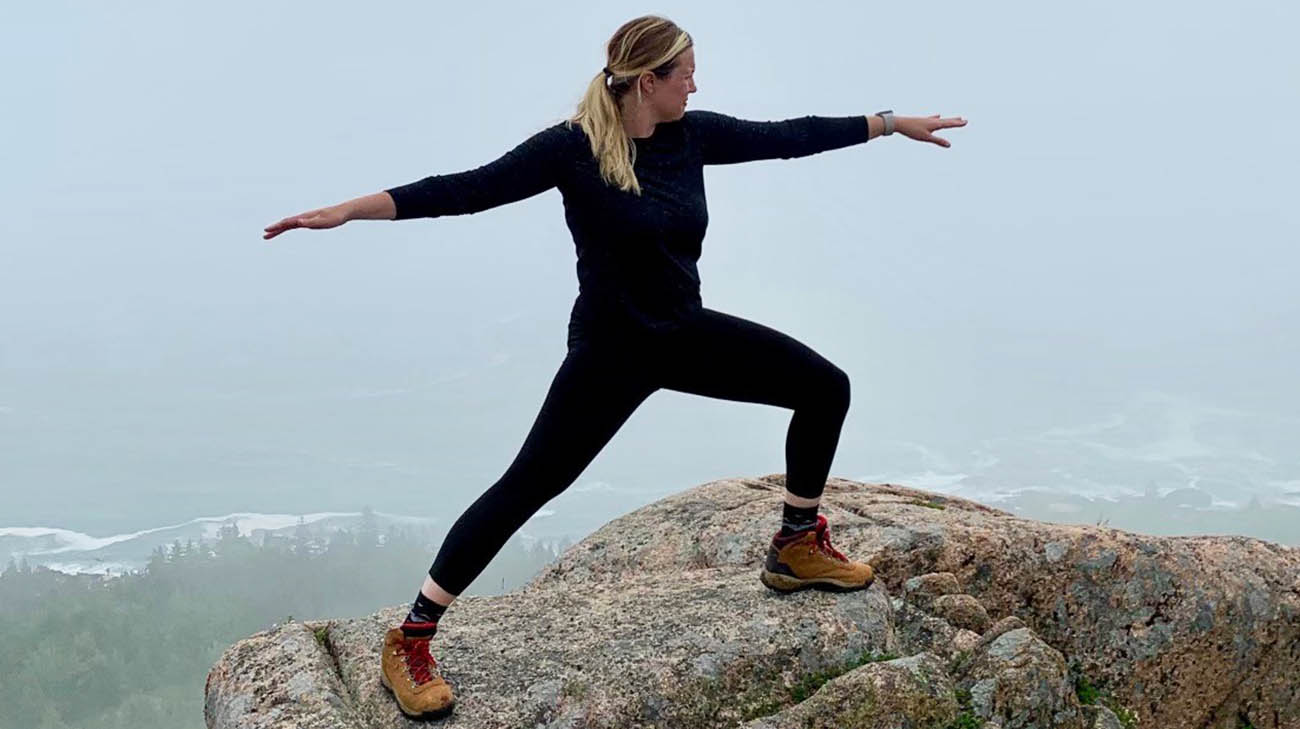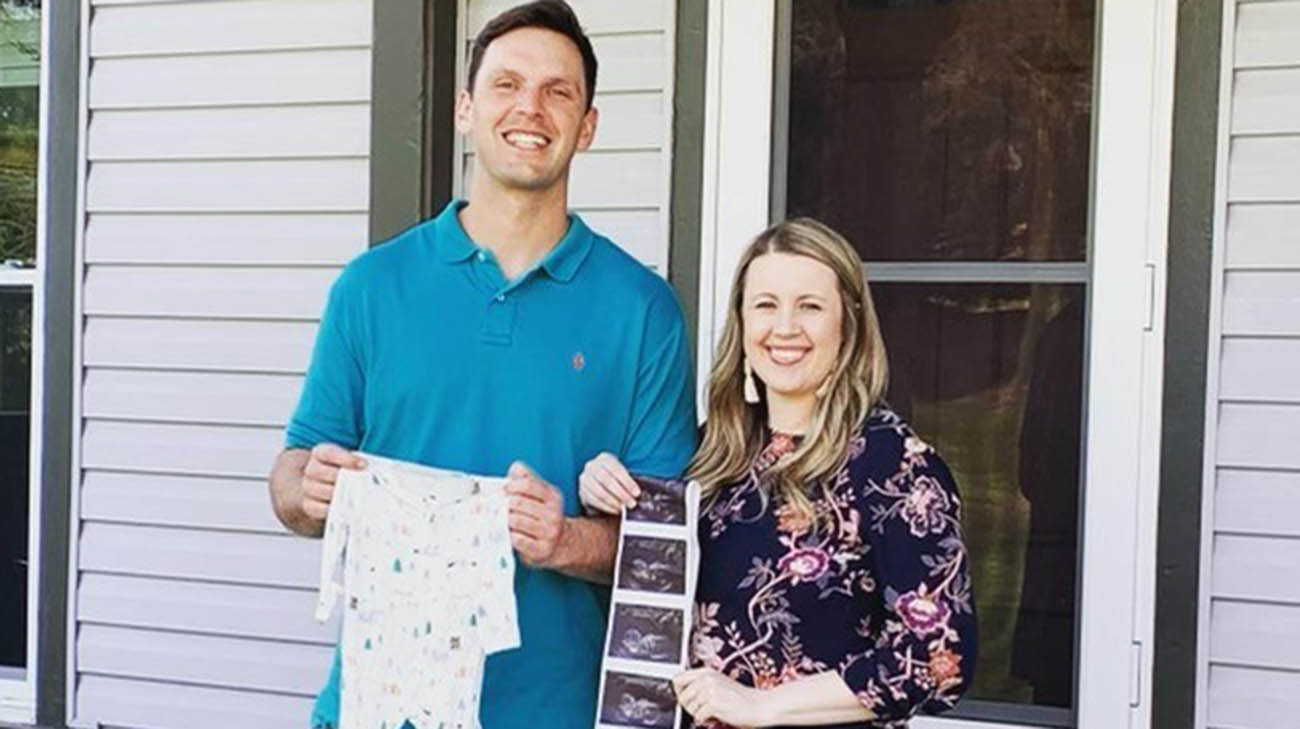
In the past year, Caitlin Jones has landed her dream job as the director of clinical education at Ashland University and moved into her dream house in Wooster, Ohio. Most exciting of all, she and husband, Rhyne Ladrach, are expecting their first child in August.
However, life looked considerably different in April 2020, when she was diagnosed with melanoma – a common and sometimes deadly form of skin cancer – on an area of her scalp.
“It was a heart-stopping moment,” says Caitlin, who has a master’s degree in physician assistant studies. “Being in the medical field, I know how serious melanoma can be and how quickly it can spread.”

Dr. Gastman surgically removed Caitlin's melanoma. He also performed a sentinel lymph node biopsy which determined her cancer hadn't spread. (Courtesy: Caitlin Jones)
Caitlin made an appointment at Cleveland Clinic on a Monday morning. The following day, she was examined by Brian Gastman, MD, surgical director of the Cleveland Clinic Melanoma & High-Risk Skin Cancer Program.
Upon examining her scalp, and reviewing the details of a biopsy taken by her dermatologist, Dr. Gastman recommended surgically removing the melanoma using a large, wide-local incision that would also require a graft to cover the wound, using skin from her groin. During the operation, Dr. Gastman would use an advanced technique called sentinel lymph node biopsy, testing 13 lymph nodes in Caitlin’s neck to determine if the cancer had spread beyond the original tumor.
“Over the years, we have developed multiple techniques to improve the speed, pace and quality of these surgeries,” explains Dr. Gastman, who noted that the five-year survival rate for melanoma is now about 93%, up from 75% a decade ago. “Often, we need to remove a large area of skin because this type of cancer can often recur and metastasize.”
Fortunately, no cancer was found in Caitlin’s lymph nodes. She has required no additional treatment, post-surgery (other than a follow-up, cosmetic procedure by Dr. Gastman to reduce the area covered by the skin graft, since the cancer hadn’t spread).

Caitlin is able to return to the things she loves including hiking and yoga. (Courtesy: Caitlin Jones)
When she received the results of the lymph node biopsy, a week after her cancer surgery, Caitlin says, “it was like someone had pressed the ‘play’ button on my life again. Colors were suddenly brighter.”
Caitlin believes if she had waited just a month longer to have her scalp checked, the result may not have been so positive. Indeed, she credits Rhyne with prodding her to visit a dermatologist, when he spotted a mole on top of her head that had changed in size and color.
“The pandemic was starting. There was so much uncertainty around it. I had decided I was going to wait. But he pushed me,” Caitlin says. “I’m lucky to have a husband who is quite a bit taller than I am, and who looked down and noticed it in the first place.”

Caitlin says she's grateful her husband urged her to get her mole checked. (Courtesy: Caitlin Jones)
Dr. Gastman urges everyone to follow the ABCDE rule to determine their risk of skin cancer: look for moles or growths that are asymmetric in shape; have uneven borders; have a dark color; are greater than 6 millimeters (1/4 inch) in diameter; and are evolving in their shape, size or color. If one or more of these signs occur, see your primary care physician or dermatologist immediately.
“The sun is healthy for us. So have a good relationship with it,” he recommends. “Go out in the morning or evening, not in the middle of the day when it’s most intense and you are most likely to get the type of radiation that can induce cancer. And think about what you’re wearing (for protection). You can still get the effects of vitamin D and tanning without overexposure.”
Caitlin spent years in her youth as a lifeguard, only occasionally applying sufficient sunscreen or wearing a hat. She also “used a tanning bed more times than I’d like to admit.”

Caitlin and Rhyne are expecting their first child in August 2021. (Courtesy: Caitlin Jones)
Now, she’s extremely cautious about her time in the sun, takes steps to limit its effects with head coverings and adequate clothing and is a vocal advocate for skin cancer awareness.
“I tell anyone who will listen to get serious about protecting your skin,” Caitlin avows. “Be an advocate for your health. You get one life. So take good care of it.”
Related Institutes: Dermatology & Plastic Surgery Institute, Cleveland Clinic Cancer Center

